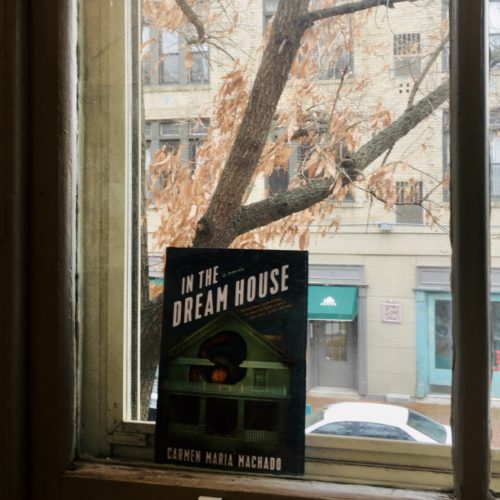
I am unaccountably haunted by the specter of the lunatic lesbian. I did not want my lover to be dogged by mental illness or a personality disorder or rage issues. (…) Years later, if I could say anything to her, I’d say: “For fuck’s sake, stop making us look bad.”
In the Dream House
The awful truth about stories of abuse is that they are, at brass tacks, incredibly banal. Most manipulators and abusers follow the same patterns, as if a sulfuric and still-smoking demon popped into existence and gave them a handbook. But that’s still too interesting an image for the bitterly basic truth: certain patterns of behavior just work. So many of these stories share the same narrative structure.
True as this may be, it’s infuriating — for two reasons. One is how reductive this fact becomes: really, that’s the problem with abuse stories? They’re all the same? How dare you, how dare you dismiss the horrors of the human condition as not having enough plot twists, etcetera, so forth. The other reason it infuriates is that the familiarity makes the fact of the abuse all that less believable, to some: how could you not see it coming? How did you not understand what was happening? (Why didn’t you leave?) We all know this story, how did you not know you were living it?
Carmen Maria Machado’s In The Dream House tries to tackle these issues (which are, in a sense, the same issue) with vaulting ambition: recontextualizing and re-imagining Machado’s time spent with an abusive partner as different literary and film genres, as sociological text, as fairy tale metaphor… the list goes on. She takes us through the relationship linearly, but slices defining moments up into an arrangement of essay-like chapters: “Dream House as Lesbian Pulp,” “Dream House as an Exercise in Point of View,” “Dream House as Chekov’s Gun.”
Her overarching thesis — that queer women have been and continue to be just as likely to abuse each other in relationships as anyone else, that queer women are just as resistant as anyone else to admitting this fact — is a live wire. Its current lights up the book with urgency, taking anyone who reads it to task by asking the hard questions. How do we define abuse, where do those definitions come from, how are they perpetrated? How does the stereotype of predatory queerness interact with our reluctance to name and expose abuse, as a community?
The constant framing and re-framing of her experiences also serves to draw on different elements, play with style and form, heighten atmosphere. Machado invites the reader to experience the relationship as something other than the too-familiar narrative structure, even though they know its real “genre.” It’s a fantastic way to capture the conundrum of examining abusive relationships in retrospect, the frustration of how obvious the signposts are, coupled with how, when it was happening, you kept hoping you were reading it wrong, and you’d wake up in a different story.
In the Dream House is a wholly admirable work. It’s cleverly imagined and skillfully executed. It tackles meaningful issues and uses its platform to shine a brighter light on things left in the dark for too long.
The book’s subject matter makes it hard to critique. Tackling the author’s choices feels like criticizing her very personal journey in processing her trauma — which is exactly what the book is, and so the snake eats its own tail (/tale). And yet for all the book’s admirable qualities and as much as I enjoyed the process of reading it, its overall impact felt surprisingly light once I finished. Possibly because I am already a convert to Machado’s arguments about abuse in queer female communities and how important those stories are, because, as she writes, “our culture does not have an investment in helping queer folks understand what their experiences mean.”
But possibly because Machado does a neat little disappearing trick into her own narrative. She distracts you with form and style and citations, and although she preserves the details of what she said and did, she deliberately exorcises her own rage. It lurks in the shadows — most notably in the “Dream House as Choose Your Own Adventure” section — and she tries to claim it, in the end. But by that point Machado has spent so much effort talking about her experience in every context but this one, the context of her own pain, it doesn’t quite click. Arguably it isn’t meant to. Machado has been upfront on social media on how difficult this book was to write, how she has sometimes regretted selling it. Turning personal horror into publicly-consumed product requires distance, if one wants to stay sane.
The result is perhaps more like an excellent master’s thesis — or, to extend Machado’s own metaphor, a recreation of the dream house in exacting and perfect miniature. An incredible recreation instead of the thing itself, built to be contained and never meant to be inhabited by living creatures. The bulk of In the Dream House is written in the second person (you do this, you hear something, you drive the car), and I was reminded of a line from Richard Siken: “This is in the second person. This is happening to you because I don’t want to be here.”
-Katharine
